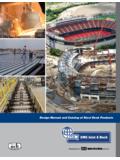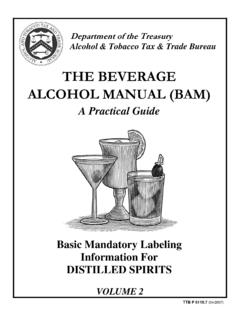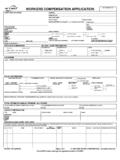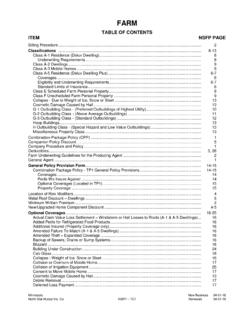Transcription of Australian Hardwood Drying Best Practice Manual Part 1
1 Australian HardwoodDrying best PracticeManual Part 1 Manufacturing & ProductsProject No. 2003 Forest & Wood Products Research and Development CorporationAll rights Hardwood Drying best Practice Manual Part 1 The Forest and Wood products Research and Development Corporation ("FWPRDC") makes no warrantiesor assurances with respect to this publication including merchantability, fitness for purpose or and all persons associated with it exclude all liability (including liability for negligence) in relationto any opinion, advice or information contained in this publication or for any consequences arising fromthe use of such opinion, advice or work is copyright and protected under the Copyright Act 1968 (Cth).
2 All material except the FWPRDC logo may be reproduced in whole or in part, provided that it is not sold or used for commercial benefit andits source (Forest and Wood Products Research and Development Corporation) is or copying for other purposes, which is strictly reserved only for the owner or licensee ofcopyright under the Copyright Act, is prohibited without the prior written consent of the Forest and WoodProducts Research and Development no: :Gregory Nolan & Trevor InnesTimber Research Unit, School of Architecture, University of TasmaniaLocked Bag 1-324, Launceston, Tasmania 7250 Tel: (03) 6324 3688 - Fax: (03) 6324 3141 Adam Redman & Rob McGavin, Queensland Forestry Research InstitutePrimary Industries Building80 Ann St, Brisbane, Queensland, GPO Box 46, Brisbane, Q 4001 Tel: (07) 3896 9708 - Fax: (07) 3896 9628 Forest & Wood Products Research & Development CorporationPO Box 69, World Trade Centre, Victoria 8005 Tel: (03) 9614 7544 - Fax: (03) 9614 6822 - Web: 1 920883 01 0 Australian Hardwood Drying best Practice Manual Part 1 !
3 Drying overview & strategy ! Coupe ! Log yard ! Green mill ! Green pack ! Bioprotection ! Rack timber Prepared for the Forest & Wood Products Research and Development Corporation by Gregory Nolan Trevor Innes Timber Research Unit School of Architecture, University of Tasmania Adam Redman Rob McGavin Queensland Forestry Research Institute The FWPRDC is jointly funded by the Australian forest and wood products industry and the Australian Government. Introduction Australian Hardwood Drying best Practice Manual 00-2 Unless otherwise credited, all photographs and images in this document were taken or prepared by the authors. Introduction Australian Hardwood Drying best Practice Manual 00-3 Contents Manual Module No.
4 Title Introduction Manual Structure Acknowledgements Drying Overview and Strategy Coupe Log Yard Green Mill Green Pack Bioprotection Part 1 Rack Timber Air Drying Pre Drying Reconditioning Controlled Final Drying Dry Milling Storage Information Assessment Drying Quality Assessment Moisture Content Monitoring Part 2 Glossary Introduction Australian Hardwood Drying best Practice Manual 00-4 Introduction Across Australia, Hardwood producers process and dry a wide variety of native Hardwood species into high quality visual and commodity structural products.
5 Like the species they process, these producers vary considerably in their skill, capacity and potential. However, to produce stable timber to an acceptable market grade consistently and profitably, they all face the same challenges: Australian hardwoods are natural materials with variable properties. This variability has to be recognized and managed; The timber from Australia's hardwoods must be dried from its original unseasoned condition to a moisture content suitable for its intended use if it is to remain stable; The timber must generally be dried slowly and with care. If the timber is subject to significant adverse conditions at any time as it dries, it may be damaged and lose value; and The producer needs to recover the maximum volume and value of dry material efficiently from the wood resource they have available.
6 To address these, the Drying process must be managed and conducted effectively and efficiently. This is not the job of a single person. It must be the responsibility of everyone involved in the process. This requires that a ' best Practice ' approach be used. Aim of the Manual ' best Practice ' in Hardwood Drying is a set of operations established and conducted to achieve high grade results in product quality and recovery, flexibility, innovation, cost, and competitiveness, through the cooperation of management and employees in all key aspects of the process. This Manual aims to provide guidance in establishing this set of operations. It outlines: economic and feasible technologies for increasing recovery and reducing avoidable loss during processing from the log to the finished board; and mechanisms that allow production value to be optimised in mills of disparate size.
7 The Manual only deals with issues that materially affect the Practice of Drying timber. However, guidance in some sections is limited by: the diversity of producer capability, location, equipment and products; the range and variability of the species processed; and the state of knowledge. In many areas, it has not been possible to verify the benefits of one method of Practice over another at all location. Introduction Australian Hardwood Drying best Practice Manual 00-5 The Manual structure This Manual is arranged into modules that generally match the major work areas of the Hardwood Drying processes, such as the log yard and air Drying .
8 Each module is generally designed to be a self contained document. Each module is then structured into discrete parts: Objectives: This part includes a description of actions covered in the module and lists the performance requirements for those actions. The performance requirements provide the gauge by which any Practice should be judged. Management: This part includes a general description of the theory, background and equipment relevant to the actions covered in the module. It then details the management decisions relevant to the performance requirements, the procedures that need to be in place and the information that should be collected. Operations: This part includes a brief description of the background to action in the area and the things that need to be done to comply with the performance requirements.
9 It also lists things that need to be checked and paperwork that needs to be completed. Checklists: This part includes checklists that can be used in assessing performance in the actions covered in the module. Not all sections have checklists. Avoidable Loss: This part shows what goes wrong when the Practice does not match the performance requirements. It shows why certain things should be done, and why others should be avoided. References: This part lists the references used in preparing the module. Introduction Australian Hardwood Drying best Practice Manual 00-6 Acknowledgements Preparation of this Manual has been a collaborative effort from all levels of the Australian Hardwood industry.
10 It contains contributions from research and industry Hardwood Drying specialists from all over Australia and draws from the research results of many organisations. At the same time, it contains contributions from the managers and operators of many of Australia's Hardwood mills who made their skill and experience available. In particular, the authors acknowledge the cooperation of: Boral Timber Clennett Industries Drouin West Timber Pty Ltd Forests & Forest Industries Council Australasian Furnishing Research and Development Institute Limited Gunns Ltd. Hurfords Hardwood Hyne & Son Pty Ltd Gould J L Sawmills Pty Ltd Kopper-Hickson McKay Timber Neville Smith Tasmania Pty Ltd Neville Smith Timber Industries Pty Ltd.





